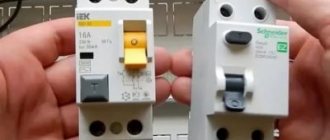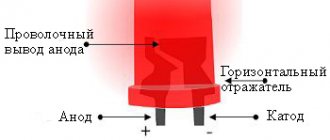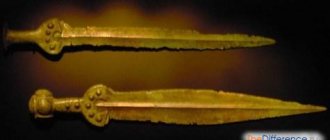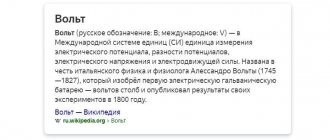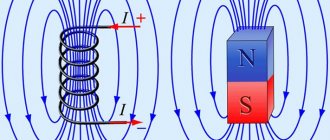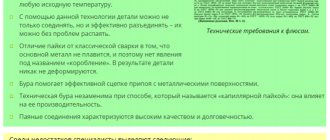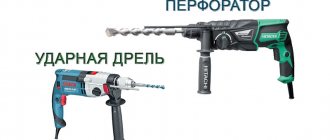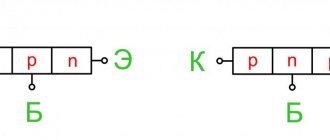0
0
0
0
Previously, there was a note about whether it is possible to save money in 2022 if you use a boiler (water heater) instead of hot water supply.
There I also placed a calculator with which you can make calculations based on your conditions (for more details, see the link).
In the comments they suggested adding metering for a two-tariff electricity meter, which is what I decided to do.
- In this article you will find a calculation of whether it is profitable to install a two-tariff electricity meter, whether it will pay off and how quickly.
- You can use an online calculator and see if you can save money if you switch to another meter.
- Tariffs differ in each region (city), so further all calculations will be given for Moscow and Novosibirsk.
- Using the calculator in the article, it is easy to recalculate for yourself.
Multi-tariff electricity meter
The main parameter from the point of view of savings is the number of tariffs included in the electricity meter for an apartment; there are single-tariff, double-tariff or multi-tariff electricity meters.
Let's take a closer look at the two-tariff system, where the day rate is from 7:00 to 23:00 and the night rate is from 23:00 to 7:00. As an example, consider electricity tariffs in Moscow in 2014.
The table shows that the night tariff T-2 is 75% lower than the day T-1 tariff, so if, for example, of your monthly 200 kWh, the night tariff T-2 accounts for half of the electricity consumed, then the price for electricity will be equal to:
C=Wday*T-1 + Wnight*T-2 = 100*4.53 + 100*1.16 = 569 rubles
With a single-rate tariff, when the price for electricity is the same at all hours of the day:
C=W*T = 200 * 4.50 = 900 rubles
The difference was 331 rubles, and in a year it will already be 4,000 rubles. Your multi-tariff electricity meter for an apartment or house will pay for itself in almost 1 month, and in the future you will actually save on electricity bills. And if you have your own home with a consumption of not 200 kWh per month, but 2,000 kWh (electric heating, electric heated floors, you turn on the washing machine only at night), then the savings with a multi-tariff electric meter will be much more significant.
But......not everything is the same for everyone when it comes to paying for electricity with two-tariff electricity meters, let’s take another region - the Kursk region:
In the Kursk region, the price for electricity, if the electric meter also “winds up” 200 kWh, will be at the “day-night” tariff equal to:
C = 100*3.22 + 100*2.41 = 563 rubles
And with a single-rate tariff:
C = 200 * 3.05 = 610 rubles
The difference with a two-tariff electric meter for an apartment or house is no longer so significant, and this is taking into account the electricity consumption day and night 50/50. And if in a private house this can be achieved quite realistically - by increasing the power of the house’s electric heating or heated floors at night, and reducing it during the day, then in an apartment, consumption during the day in most cases will be 80 percent, and this will lead to the fact that at the “day-night” tariff you will pay more than at the single-rate rate. But if the difference in the price of an electric meter of 600-800 rubles is not significant for you, then purchase a multi-tariff electric meter for an apartment or house. In case of constant overpayment at the day-night tariff, you can always switch to a single tariff by writing the appropriate paper to the energy supply, if you pay for electricity directly to them, or to your management company.
In my opinion, the transition to a multi-tariff regime, first of all, depends on a person’s lifestyle; if a person constantly wakes up at 7 am and goes to bed until 11 pm, then the transition to multi-tariff accounting is absolutely not necessary for him. You can turn on the washing machine after 11 pm, when you are already asleep, but you do not control the process, and one water leak in the washing machine, if you have to re-do the repairs for your neighbors and yourself, will “eat up” all the savings from the “nightly” tariff for many years .
Additional parameters of the electric meter
I will briefly describe the various additional parameters and functions of electricity meters. Electricity meters differ according to the principle of operation: electronic and induction. Many people mistakenly believe that if the electric meter for an apartment is electronic, then it is obviously more accurate than an induction one, but this is not so. If an electric meter has the same accuracy class (error), for example 1%, then these electric meters will count the same with an error of up to 1%.
Currently, there are many additional characteristics and options for an electric meter for an apartment or house - this includes displaying various information on the display (date-time, electrical network parameters, power value, electricity growth per month, year, etc.), storing values electricity for several months, electronic passwords, remote connection and reading of electricity meter readings via digital interfaces, GSM modem, using an optical port, and much more.
It is clear that the more sophisticated the electric meter for an apartment or house is, the more expensive it is. Leading manufacturers of electricity meters have a fairly large selection, from the simplest induction electricity meters for several hundred rubles, to electronic ones with all sorts of bells and whistles for several tens of thousands of rubles.
Also, when choosing an electric meter, pay attention that the electric meter for the apartment is included in the State Register of Measuring Instruments of Russia (State Register), i.e. an electricity meter for an apartment must be “approved” by Russian standards in the field of metrology
Each measuring instrument that meets Russian standards is entered into the register under its own unique number.
Tariff calculations. Is it profitable to have a two-tariff electric meter in Saratov?
Is it profitable to install a multi-tariff (two-tariff) electricity meter in your apartment?
Let's consider several options.
In the Saratov region (in the presence of nuclear power plants, hydroelectric power plants and thermal power plants), electricity tariffs are such that now (end of 2012) it is unprofitable to install two-tariff meters (if you lead a daily lifestyle, i.e. normal). But there are options - people like to work at night (and in the light), do laundry at night, heat water, warm floors, cook at night on electric stoves... - then you need to count.
The best mechanical electricity meters
Such models are otherwise called inductive. The mechanism of their operation is based on the influence of current-carrying coils on a movable metal disk, the number of revolutions of which is proportional to the amount of energy consumed.
Mechanical meters are large in size and do not require automatic readings or multi-tariff metering. However, they are highly reliable, low in price and can be used for more than 15 years.
Incotex Mercury 201.5
4.9
★★★★★ editorial assessment
92% of buyers recommend this product
See review
The model is equipped with a pulse telemetry output and a shunt, making it easier to verify the meter, take readings and include it in the AIMS. Reverse polarity protection protects against electricity theft.
The calibration interval of the device is 16 years, the maximum current is 60 Amperes. The device is highly reliable due to the screwless housing design and the absence of magnetically sensitive elements in the measuring circuits.
Advantages:
- durable body;
- convenient fastening;
- long service life;
- protection against polarity reversal;
- low price.
Flaws:
noisy.
Incotex Mercury is designed for energy metering in single-phase AC circuits. Can be used both in private homes and in automated control systems for electricity consumption.
Typeit NEVA 101 1S0 230V 5(60)A
4.9
★★★★★ editorial assessment
92% of buyers recommend this product
See review
The main features of the model are long service life and ease of installation. The average operating time of the counting mechanism before failure is 280,000 hours, which is more than 30 years of continuous operation.
The device can be mounted either on a TN35 type rail or on three construction screws. Correct setup of the device can be done without the help of a specialist.
The LED indicator will let you know if the connection polarity is incorrect, and reliable fixation of the conductors with special clamps will prevent loss of contact.
Advantages:
- universal mount;
- captive screws;
- active energy test output;
- ease of commissioning.
Flaws:
noisy work.
Typeit NEVA is used in single-phase AC networks with a nominal frequency of 50 Hertz. Installed in country houses, public buildings and garages.
IEK CCE-1R1-1-01-1
4.9
★★★★★ editorial assessment
89% of buyers recommend this product
Stable operation of the model is ensured thanks to a wide range of operating temperatures and protection against surge voltages.
The special design of cable clamps guarantees reliable connection of wires and prevents power loss.
The reverse stop mechanism prevents the device's meter readings from being reset. A standard telemetric pulse output allows for remote collection of energy consumption data. The maximum permissible current is 60 Amps.
Advantages:
- verification interval - 16 years;
- work at extreme temperatures;
- stable work;
- ASKUE support.
Flaws:
Lack of fasteners included.
IEK CCE-1R1-1-01-1 will be an excellent purchase for a single-phase network. It should be installed in an unheated workshop or in a country house.
Energy meter CE101-R5.1
4.8
★★★★★ editorial assessment
87% of buyers recommend this product
See review
The model is easy to install and attaches to a flat surface using a DIN rail and two screws. Depending on the version, the meter can be supplied with either an LCD display or a mechanical reporting device.
The maximum permissible current is 60 A. Protection class IP51 ensures complete safety of the device from vertically falling raindrops and dust entering the housing. A five-year quality guarantee facilitates maintenance and returns.
Advantages:
- easy installation;
- moisture-resistant housing;
- long warranty;
- low cost.
Flaws:
sensitivity to voltage surges.
The average service life of the Energy Meter CE101-R5.1 is 30 years. The meter can be installed in a country house, a private house or a public building. The simplicity of the design and affordable price make purchasing this model extremely profitable for any user.
Single-phase, three-phase, maximum current
The question of which meter to install—one-tariff or two-tariff—may not be the only one. Most city apartments or private houses are connected to a single-phase 220 V network with a frequency of 50 Hz. These are the indicators that the counter should meet. However, there are also connections to a three-phase network. This usually becomes necessary in apartments or private houses with electric heating or stationary electric stoves. In this case, special sockets and plugs are installed in the house, on more powerful cables.
If you have a three-phase connection, you will have to purchase a corresponding meter. Some three-phase meters can be connected to a single-phase network, which greatly expands their versatility.
In addition, for each meter, parameters such as rated and maximum load current are determined. As a rule, they are designed for a maximum permissible value of 60 A, which corresponds to 10 kW. This is quite enough for most cases. However, if the total load can exceed 10 kW, then you should purchase a meter with a maximum current value of 100 A. Typically, such devices are connected directly to the network without the use of additional converters.
All these indicators are indicated on the front panel of the device or in its technical data sheet.
Which meter is better - single-tariff or double-tariff? Press!
In almost all EU countries, dual-zone electricity meters are not something special. This is an effective method to reduce costs with minimal investment.
In Russia, such electricity metering devices began to be installed relatively recently.
Differentiation of accounting for the consumption of this good of humanity allows us to achieve two important aspects:
To identify all the main advantages of a two-tariff meter over a single-tariff meter, you need to compare a number of basic parameters.
Disadvantages of electromechanical devices
Even today, many apartments and private houses have models of measuring instruments from the last century.
They have enough disadvantages for consumers to prefer more modern models.
The electromechanical mechanism is quite reliable only from the point of view of the duration of continuous operation.
The disadvantages of the device are:
- single tariff;
- accounting error;
- low protection rate;
- lack of basic functions that are available in electronic analogues.
Also, installing these devices can cause certain difficulties. For example, installing a model in a modern switchboard with a DIN rail will be very problematic. The same cannot be said about electronic analogues.
In addition, the appearance of the device itself is not entirely attractive. Modern interior style will not hide this drawback.
Advantages of multi-tariff devices
Manufacturers of electricity metering devices produce models that differ fundamentally. Their main distinguishing feature is the absence of moving parts.
Only a small number of electronic elements make it possible to display a number of indicators that make it possible to assess the state of the network at the current moment.
Among the main advantages of digital two-tariff meters are:
The ergonomic design of the device is complemented by the presence of several fasteners, which allows installation with almost one movement.
After this, you can start connecting the wires.
The optimal choice in terms of cost and accuracy are class 2 devices. In a private house or apartment, a more accurate device will be ineffective.
Saving conditions
The tariff schedule for electricity is structured in such a way as to reduce peak loads throughout the entire network as much as possible.
Consequently, the time shift in connecting powerful household appliances is compensated by lower costs.
Peak loads in the system occur during the periods from 7 to 10 am and from 19 to 23 pm. To receive the benefit, you need to consume electricity between 11 pm and 7 am. To record and differentiate indicators, two-zone devices are used. As a result, two indicators are transmitted, which are calculated at different rates.
Using a two-tariff meter will allow you to fully reimburse your purchase costs.
In the future, it will be possible to reduce energy costs.
An important argument is also the consumption indicator. The higher it is, the less time it will take to return the money spent on the purchase of the meter.
This is one of the most affordable ways to save money and does not require capital investment. Compared to a conventional meter, the cost of an electronic analogue with programming capabilities is approximately 2-3 times higher.
At the same time, thoughtful use of household appliances will allow you to completely pay for it in almost a year. In the future, regular costs for paying for electricity will only be lower.
In practice, the active use of powerful devices at night is quite possible, among them:
- electric boiler;
- water heater;
- washing machine;
- Dishwasher;
- small household appliances (multi-cookers, bread makers, etc.).
Many of them have a delayed start function. This allows you to start the process exactly during the period at a reduced rate.
As a result, food will be cooked or laundry will be washed in a timely manner, and the cost of each kilowatt will be lower.
Recently, tariffs have been increased approximately once a year. Consequently, the possibility of obtaining the benefits of civilization at a reduced cost is possible with a programmable counter. A three-tariff meter will be even more effective than a two-tariff meter.
It is worth considering: in Russia, tariffs for more than two zones are not provided everywhere.
How do you know if it is profitable for you to take a meter with two tariffs?
To combine a comfortable life and low electricity bills, you don’t need to adjust to the meter. All you have to do is choose a device that suits your needs. To understand whether installing a two-tariff electric meter is beneficial for you, you need to complete three steps:
- Calculate at what ratio of night and day electricity consumption (when calculating according to two tariff plans) the payment will be equal to what is considered one rate (at one tariff);
- Calculate the average actual electricity consumption at night and during the day;
- Compare the actual ratio of nighttime to daytime consumption with what was calculated in point 1.
If the actual night-to-day ratio is less than the calculated one, then having an electric meter with two tariff plans is unprofitable. If they are equal, then it makes no difference what kind of counting device you have. You will notice the benefit only when the actual ratio of night to day is greater than the calculated ratio.
Definition of design ratio
To do this, you need to know how much 1 kWh of electricity costs:
- For single-rate payment (OO);
- At night (BUT);
- During the day (BEFORE).
Calculation procedure:
- Find the difference between OO and NO;
- Find the difference between DO and OO;
- Divide the result of action 1 by the result of action 2;
- Add 3 units to the result;
- Divide one by the result of action 4;
- Multiply the number obtained after step 5 by 100. This will be the calculated ratio (RO) of night-time energy consumption to daytime, at which the payment for electricity at least does not increase when installing a two-tariff meter.
This can be expressed in one formula, but it is complex:
Example. OO - 3.6 rubles per 1 kW*hour, NO - 1.8, and DO - 3.9 rubles. We find the difference between OO and HO - this is 1.8. Then we find the difference between DO and OO - this is 0.3. Now divide 1.8 by 0.3. We get 6. Add 1 - now we have 7. Divide 1 by 7 and get approximately 0.14. And multiplying by 100%, we get 14%. This means that your nighttime energy consumption must be at least 14% of the total (day + night), so that installing a meter with two tariffs does not hit your pocket.
Definition of actual ratio
Now you need to find out how much electricity you actually spend at night and during the day. To do this, take readings twice every day for one month at exactly 7.00 and 23.00. Then, by subtracting the penultimate reading from the last, calculate how much you spend on average during the day and how much at night. It is convenient to record data in a table, as in the figure below.
Average daily flow rate (ADF) is the sum of all daily readings divided by the number of days in a month. The average night consumption value (ANV) is the sum of all night readings, also divided by the number of days in a month.
The actual ratio (FR) is found using the formula:
Example from the table: SZDR = 7, and SZNR = 3. Then FO = 3/(3+7)*100% = 30%.
Comparison of calculated ratio with actual ratio
How do you know that single-phase, two-tariff electric meters will bring benefits? We need to compare the relationships we obtained: RO with FO. Three cases are possible:
- RO>FO. Your costs will increase when installing an electric meter with two tariffs. You don't need this;
- RO=FO. Costs will remain the same. There is no point in reinstalling;
- RO<FO. The transition to two-tariff payment will bring economic benefits.
Example. Our RO is 14%, and FO is 30%. This is the third case, which says that a two-tariff electric meter will help us save money when paying for electricity.
Technical characteristics and types of devices
Manufacturers produce various versions of two-tariff meters, with a different set of additional functions, in different price categories. But all devices are united by a common task: dividing electricity metering into time intervals and displaying the received readings on the screen.
More modern models have the ability to synchronize with a computer using a modem. The necessary information is displayed on the PC, and on a certain day of the month, electricity consumption readings are provided, which are then transmitted to the energy company.
Some devices are equipped with memory cards to save information about monthly electricity consumption. This function is convenient in case of disagreements with the management company regarding energy consumption issues.
"Mercury 200" two-tariff
The counter is popular among users, judging by the number of sales. The manufacturer produces both single-tariff metering devices with the designation 200.00, and multi-tariff ones. The two-tariff “Mercury” is designated 200.02.
Device characteristics:
- Depending on the modification, the device is available for 220 and 380 V.
- The current varies within an average range of 5-60 A.
The Mercury 200 device has self-diagnosis: operational problems are automatically displayed on the screen. The meter is able to store previous readings, which can be used if necessary (for example, in case of problems with the energy company). Belongs to accuracy class 1. The device is electronically sealed and has an increased level of security against theft of electricity.
If you have certain knowledge and skills, you can seal and reprogram the device yourself using special software. Installation is carried out on a DIN rail. The warranty on the model is three years. The service life of the Mercury 200 meter is at least 30 years.
To take readings from the Mercury 200 device, you need to press “Enter” several times and wait for the numbers to appear. The device alternately displays the time and date in the “hour, month, year” format, after which day and night tariffs are displayed. After all tariffs, the total value is displayed. The numbers change automatically in a cycle of 5-10 seconds. The cycle is pre-set manually.
SOE-55 two-tariff
Technical characteristics of the device:
- the operating current parameter is 50-60 A;
- there is an RCD - a residual current device that instantly disconnects the circuit in the event of a current leak;
- accuracy class - 1;
- service life - more than 30 years;
- The warranty period is 3.5 years.
The meters are produced in four types of housings. The maximum weight of the device is 0.6 kg.
Connection diagram
As a rule, the connection diagram is indicated on the device itself or in the instructions for it. Below is the simplest diagram according to which you can quickly, independently and without unnecessary problems connect any unit.
The simplest connection diagram
In general, a two-tariff electric meter is a device that operates in an economical mode by reducing the consumption of energy resources and protecting the home electrical network from tripping of protective equipment. It has its pros and cons. It is profitable to install it, according to user reviews.
You might be interested in this: Coil inductance, its purpose, characteristics, formulas
How to choose?
What do you need to consider to choose a good electricity meter? First of all, you should get rid of the prejudice that the more expensive the electric meter, the better it is. A simple low-cost device can provide a sufficient level of functionality and reliability. In addition, expensive equipment often requires additional maintenance.
The most important parameter influencing the choice is the accuracy class. The higher it is, the less you will have to overpay for errors in calculations. An indicator of 2.0 is considered optimal.
Look at what test interval the meter is designed for. Some modern models are ready to reliably serve for 15-20 years, but most often this figure is 4-5 years.
Before choosing a particular meter, check it for compliance with the type of network connected to your apartment or house. Only a single-phase device can be connected to a single-phase network, and a three-phase device to a three-phase network.
Meter with separate tariffication: parameters for selection
First you need to find out whether the region where the buyer lives supports this payment system. After all, such an acquisition must be justified.
The number of tariff levels also needs to be clarified in advance. There can be not only two, but also more. The gradation may increase.
For example, separate schemes are used for workdays and weekends, and for seasons. But most of these decisions are made at the experimental level.
Some modern models have a serious “technological” backlog. This means that you can use from 8 to 12 conditions or parameters for settings.
Installation
The electric meter must be installed by qualified specialists
Working with electricity is complex and unsafe, and it is important to do everything correctly. An electrician from the energy supply company has the right to unseal and seal the meter
Mercury 230
There is no prohibition to involve an electrician from a private company in the process, but the employee must have permits for such activities. The specialist installing the device must have a good understanding of the issue. Installing a single-phase multi-tariff meter will cost the user more than installing a single-tariff device.
There are certain rules regarding whether the homeowner must maintain and replace the meter.
- Provided that the flow meter is installed in a public place, it is public property. In this case, expiration dates and timely replacement are controlled by authorized services.
- Provided that the meter is located in an apartment, house, etc., the owner is responsible for the condition and timely replacement.
The contract may contain other conditions; it is necessary to study the document. A standard agreement, an act on the division of balance sheet assets are the main documents that should be in the hands of the owner.
To replace the meter and install a new flow meter, you need to prepare the following documentation:
- submit an application to the energy company;
- draw up an act;
- carry out the procedure for verifying the old metering device;
- seal the installed electric meter.
Cascade Mercury AT-01
In addition to the documents mentioned, you need to prepare a standard package of papers:
- a document confirming ownership where the flow meter is required to be installed;
- power of attorney, if the application is submitted by the owner’s assistant;
- photocopy of passport.
To install the flow meter correctly, you must follow the basic installation rules:
The device must be located in a place of free and unobstructed access. Maintenance or verification should be carried out without difficulty. The line must be de-energized for the entire period of installation of the device.
This is pre-agreed with company representatives. The height of the meter from the floor level is from eighty to one hundred and seventy centimeters. The device must be grounded. All machines must be connected to a meter. If the integrity of the seal is damaged, it is important to immediately call a specialist to reseal it. After installing the flow meter, a test run is performed.
Installing a meter on the street raises many questions. There are no documents regulating the location of the device.
Representatives of the energy sales company insist on street placement of the meter, but the user should be aware of the following facts:
- Installing the device outside significantly reduces the service life of the flow meter. Unfavorable environmental conditions negatively affect the condition of the device; at minimum ambient temperatures, readings are often incorrect.
- Placing the device outdoors implies the possibility of uncontrolled access to the device by third parties.
- To prevent theft or damage to the meter, they are often installed at a height of three meters. The user has to take readings using a ladder.
There are a number of requirements for installing an electric meter:
The flow meter is installed in electrical cabinets, on rigid panels. The recommended installation height of the device is from eighty to one hundred and seventy centimeters. When the meter is located in places with an increased likelihood of damage, clogging or access by third parties, the meter is installed in a lockable structure. For ease of maintenance and readings, the flow meter should be located in a place convenient for access. It is important to choose the correct diameter of the input cable. The input cable cannot consist of elements fastened together.
In private households, it is possible to lay electrical wiring from the meter in the ground, at a height in the air.
Which meter is the best for a house or apartment? Despite the great popularity of electronic metering devices, mechanical electricity meters remain in demand. The absence of the need for expensive maintenance, high reliability and long service life speak in their favor. In European countries, interest in familiar, unpretentious electromechanical flow meters is increasingly being revived.
Which device to choose needs to be decided based on a lot of factors. Choosing the best metering equipment requires careful consideration.
Current tariffs (using the example of Moscow and the Moscow region)
The amount of payment for electricity for two-tariff meters depends on three factors - the type of slabs in a multi-storey building, the time of day, month of the year, and the region. Let's look at the main options.
Multi-storey buildings with apartments with gas stoves
- In the period from January 1 to June 30, the night and day zone tariffs for Moscow are 1.79 and 6.19 rubles, and for New Moscow - 2.24 and 6.03 rubles, respectively.
- In the period from July 1 to the end of 2022, the following tariffs apply at night and daytime: 1.92 and 6.19 for Moscow and 2.41 and 6.19 for New Moscow.
Multi-storey buildings with electric stoves
- From January 1 to June 30, the night and day zone tariffs for Moscow are 1.26 and 4.65 rubles, and for New Moscow - 1.58 and 4.41 rubles, respectively.
- From July 1 until the end of 2022, the following tariffs apply at night and during the day: 1.35 and 4.95 rubles for Moscow and 1.7 and 4.74 rubles for New Moscow.
Apartments and houses located in rural areas
- From January 1 to June 30, the night and day zone tariffs are 1.58 and 4.22 rubles, respectively.
- From July 1 until the end of 2022, the following tariffs apply at night and during the day: 1.7 and 4.34 rubles.
Two-tariff electricity meter table
Full version of tariffs for 2022.
See all changes in tariffs for the next years on the website https://mosenergosbyt.info/tarify/.
Which counter is better to choose?
Single-phase, designed for one tariff, has a number of advantages:
- reliability;
- low own energy consumption;
- durability - service life of at least 30 years;
- low cost (compared to multi-tariff and three-phase devices);
- high accuracy.
The main advantages of a two-tariff device are:
- savings of own funds (product payback is about 1 year);
- assistance in the operation of the power plant;
- reduction of harmful emissions into the atmosphere.
To make your choice, you need to understand what benefits you want to enjoy. If you need a cheaper meter, then it will be single-phase. If you need a durable one, you should choose a two-tariff meter. Based on their reasons for purchasing, it is easy to choose the right device.
Description
A two-tariff electricity meter is a special device that allows you to account for electricity and control the night, morning, day, and evening periods. Due to the action of this mode, it is possible to unload the network during rush hour and transfer power to the night or weekends.
Two-tariff meter
Thanks to this differential accounting, the expenditure part is noticeably reduced. This is especially true for companies that work around the clock or with short breaks.
Note! Buying such a multi-tariff meter is a profitable investment, since it is possible to reduce bills and production costs. Description of equipment
Description of equipment
Description of equipment
Advantages and disadvantages
Initially, a device was conceived for separating electricity and preserving electrical equipment in normal condition for a long time. This is the main advantage of the equipment. Additional benefits of using the device:
- saving money, both for an ordinary citizen and an entrepreneur;
- reduction of harmful elements in the atmosphere;
- power distribution of substations.
Disadvantage: After the device is installed, the user must review the hours of use of the equipment. That is, he should turn on the air conditioner with a washing machine, electric oven, vacuum cleaner and iron at night. Otherwise, it is irrational to use it. In a number of regions, there is no point in purchasing it, since at night bills are reduced by no more than 10% (in addition to the topic of whether it is profitable to install a two-tariff electric meter).
Note! The period of how long it will take to pay for the device will be 5 years. Possibility of reducing load during rush hour as an advantage of counting equipment
Possibility of reducing load during rush hour as an advantage of counting equipment
Possibility of reducing load during rush hour as an advantage of counting equipment
Principle of operation
Answering the question of how a two-tariff electricity meter works, it is worth noting that the essence of its operation is very simple. It monitors energy consumption in the day and night zones. This splits the electricity payment. In the first case, the normal tariff works, and at night it is low. If you need to use energy only at night, you can turn off the day zone. The relevance of its use is easily explained. Substations allow you to carry out a uniform load throughout the day.
As a rule, the load is higher in the morning and during the day than at night. As a result, equipment breaks down faster. Due to the massive use of meters, the load is leveled, that is, the load is transferred from the peak of activity to the evening. This reduces bills and keeps equipment running longer.
Are time periods profitable for charging?
Time periods for charging are dividing bills into a day zone (from 6 to 23) and a night zone (from 23 to 6). They balance the load on the energy system and increase the service life of equipment. Given the fact that tariffs are constantly rising, consumers are increasingly thinking about saving. As a result, during the daytime, during rush hour, the highest network load and the highest payments are observed. It is believed that at this time the consumer will use less energy compared to other watches.
At night, the network load is minimal. Since people are sleeping at this time, minimal or no equipment is working. For this reason, the tariff plan at night is lower.
According to user experiments, the benefits of using such a larder can amount to more than 2,500 rubles in an apartment. For example, with a single-tariff device Mercury 200, with reasonable energy consumption, the monthly payment calculation in Moscow Region is 9065 rubles, and with a multi-tariff device - 6321 rubles.
Note! It is important to understand that the benefit will be excluded when using noisy equipment at night during silence, during the transition to winter time (the need to reprogram the device). Timing as a profitable way to reduce energy bills
Timing as a profitable way to reduce energy bills
Timing as a profitable way to reduce energy bills
Timing as a profitable way to reduce energy bills
Why do we need multi-tariff electricity meters?
On the one hand, multi-tariff devices can significantly save energy costs. However, not a single barrel of honey is complete without a fly in the ointment. In our case, there are not one of these spoons, but four. Let's look at these disadvantages in order.
Minus the first
If we take a two-tariff meter as an example, it calculates electricity consumption at day and night rates. The difference between them can reach quite a significant amount.
Meanwhile, despite the fact that at night energy is provided at a fairly low price, the daytime tariff successfully compensates for this difference. Now let's ask ourselves the question - what do we do at night? The answer for most cases is obvious - we sleep.
Minus the second
The use of two-tariff and multi-tariff metering devices imposes serious changes on the consumer’s usual life schedule. In the case of a two-tariff meter, the consumer is forced to save during the day and try to use electricity as much as possible at night; such a schedule is not acceptable for everyone.
Minus the third
Let's say you change your schedule. We started using the washing machine at night and loading dishes into the dishwasher after midnight. But here problems with neighbors may arise. Not everyone will like having their neighbor's laundry running in the middle of the night. And by law it is forbidden to make too much noise after ten in the evening.
Minus the fourth
Let's not forget about the costs associated with reinstalling equipment. In addition to the fact that you will have to purchase a new device, you will have to spend money on its installation, configuration and sealing. It is not a fact that the money invested will pay off even taking into account changes in the energy consumption schedule. Elementary - the electricity supplier can change the tariff. And then you will have to re-configure and seal the device.
Risks of many electrical appliances used
Each home gadget connected to an outlet puts additional strain on the functioning electrical network.
And if the level exceeds the permissible limits for a long time, then this is a serious reason for an emergency on the line. To properly adjust the load on the network, an appropriate multi-tariff system was created. If, with a tariff at a single rate, the price per kilowatt consumed remains unchanged day and night, then when using a two-tariff metering device, the consumed consumption is calculated using a differentiated tariff.
How to install a multi-tariff electricity meter?
If you do not live in a house in which automated electricity metering devices (including multi-tariff meters) were installed during the construction stage, then you will have to buy and install a modern meter with a built-in tariff yourself.
The algorithm of actions is something like this:
- submit an application for replacement or installation of a meter to a service organization at your place of residence
- We provide a passport for the electric meter (if you bought it yourself) and a paid receipt for electricity for the last month
- After installing the meter, it is sealed, an act of acceptance of this device as a billing device is drawn up, and data about it is entered into the payment document for the next billing period.
The meter installation service is paid.
Illegal but effective methods
What methods are they trying to use to save energy? First of all, of course, everyone is trying to find a neodymium magnet that will stop the counter or slow down its counting mechanism; old-style counters respond well to a powerful magnetic field and stop. Modern counters already produce antimagnetic ones that can withstand a magnetic field up to a certain strength. Also among the illegal methods of saving electricity, you can find electric meters with a remote control, which allow you to reduce your electricity bill by 30, 50 and 70% at any time. But there are many nuances with the failure of meters, and on some, external influences can be recorded in the corresponding indicators.
Conclusion
Based on our calculations, we can conclude that today in most regions of Russia a multi-tariff electricity meter is more preferable. Despite this, it is advisable to carry out an individual calculation of savings taking into account the following factors:
- An electronic meter is much more expensive than a regular single-tariff meter and will pay for itself within several years.
- Each change in the division of accounting zones and the change of clocks to summer/winter time requires reprogramming the device. On average, this service costs 400-500 rubles.
- Electricity tariffs in your locality may differ greatly from those presented in the examples. Energy supply organizations in regions with a high share of night consumption are trying to neutralize the benefits of differentiated metering.
- The more “smart” equipment you have in your home (which can be set to delayed start and safely left overnight), the greater the savings a two- and three-tariff meter can bring.
Please note that houses equipped with stationary electric stoves and electric heating systems are serviced at separate rates. If your home falls into this category, before choosing an electric meter, check with your energy sales organization at what price your debt will be calculated
Electricity is an important product, without which it is impossible to provide comfortable living conditions. For the use of this resource, a monthly payment is expected at the tariff established by the servicing energy sales company. The electricity used is measured using meters.
Currently, there are many different types of metering devices: mechanical, electronic, single- and multi-phase
Let's take a closer look at the types of meters, their technical characteristics, and also pay attention to the features of choosing a device
Principle of operation
The principle of operation of a two-tariff meter is that at different times of the day the cost of 1 kW of electricity will be different. At night, a kilowatt-hour costs less than during the day.
What is it for? The first thing that is interested in this is electrical substations that generate electricity. As a rule, in the morning (from 7 to 10 am) and in the evening (7-11 pm), the load on the substation rapidly increases due to the increased consumption of electricity by enterprises and ordinary consumers. As a result, the substation has to operate unevenly, which entails rapid wear of equipment and uneven fuel consumption (gas, oil or coal). In order to somehow reduce peak consumption hours, two-tariff electricity meters were introduced.
Such devices work as follows: in the daytime (from 07.00 to 23.00) the cost of electricity is slightly higher than when using conventional devices, but at night (from 23.00 to 07.00, respectively) a second tariff is used - a preferential one, when one kW of electricity costs several times less.
Thus, this event encourages consumers to use some powerful electrical appliances at night, so that both people save their money and the substation saves its material costs.
Cost of equipment
The amount you will have to pay for installing a new device includes several cost items:
- The cost of the equipment itself. Prices range from 5,000 to 15,000 rubles. Even if the budget is limited, it is advisable to choose not the cheapest samples, but focus on the average price category.
- Payment for installation. The regional power grid will charge approximately 3,500 rubles for installation of equipment.
- Associated costs for servicing the device. Even with proper operation, you will have to allocate funds for:
- primary programming, which is carried out only by specialists;
- calling the team again to make adjustments to the program in case of changes in light tariffs;
- mandatory periodic verifications;
- replacing the batteries that power the device's memory. It is impossible to do this on your own; you will need the help of specialists.
